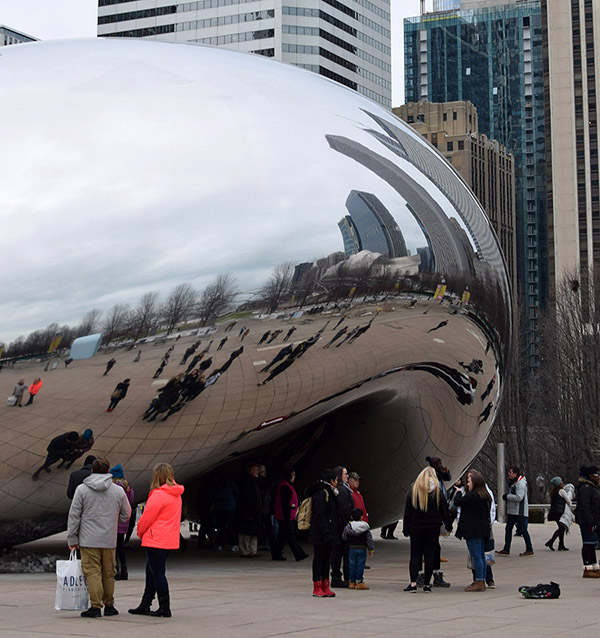Planning for Arts Vibrancy

(Copyright 2016 Kelly Wilson (CC BY-NC 4.0), from the American Planning Association’s Image Library)
Guest post by Cynthia Bowen, AICP, President, American Planning Association
Art not only enhances the aesthetics of a community, art has proven to enhance economic development, build community engagement, encourage community pride and help to create communities of lasting value.
Thoughtful integration of public art within a community can become “must-see” destinations for locals and visitors alike. Think of Cloud Gate (the Bean) in Chicago; the Wynwood Walls in the Wynwood neighborhood of Miami, Florida; or temporary art exhibits such as the famed Cow Parade that has stampeded into more than 70 cities worldwide.
The American Planning Association (APA) recognizes the vital role that arts and culture contribute to livable communities. Over the years, APA has provided best practices to help communities integrate the arts into planning processes through creative placemaking – shaping the physical and social character of a community.
A series of briefing papers, Arts, Culture & Creativity, provide guidance on how planners can use arts and culture strategies to achieve economic, social, environmental and community goals.
The arts are even appearing more regularly as a component within locally-adopted comprehensive plans. The focus of arts within comprehensive plans, created with input from the public, illustrates that the community understands not only the value and importance of arts, but also the need for ensuring artists have a place to call home. The award-winning NashvilleNext Plan from Nashville, Tennessee, highlights the role of art in telling the city’s history, providing cultural opportunities and establishing artist live-work spaces.
APA is currently undertaking two research projects sponsored by the National Endowment for the Arts Our Town program that focus on helping to make it easier for communities to integrate the arts.
Together with St. Paul, Minnesota-based Forecast Public Art, APA is translating knowledge of the public art field into learning tools for urban planners in mid-size American cities. The resulting curricula for the pilot public art certificate program will focus on best practices in planning and designing healthy cities through the public art lens, including guidance on working with artists, tactical strategies for implementing public art projects, meaningful community engagement, and racial and economic equity.
As part of another project that was just recommended for a $100,000 NEA grant, APA is partnering with the Boston Metropolitan Area Planning Council, Americans for the Arts, and Townscape Institute to help integrate the arts into planning processes through creative placemaking in communities around the country. The project will be executed in two phases: phase one will include an analysis of existing information and resources currently available for incorporating arts into community development, while phase two will focus on implementation (including identifying a demonstration area to pilot the program).
The impact and role of arts within a community has been a longtime focus for APA. The Arts and Planning Interest Group brings together planners interested in advancing the role and prominence of arts within communities.
It is time for communities to bring art back into our daily lives. Planners can play a key role by incorporating art into the planning process.